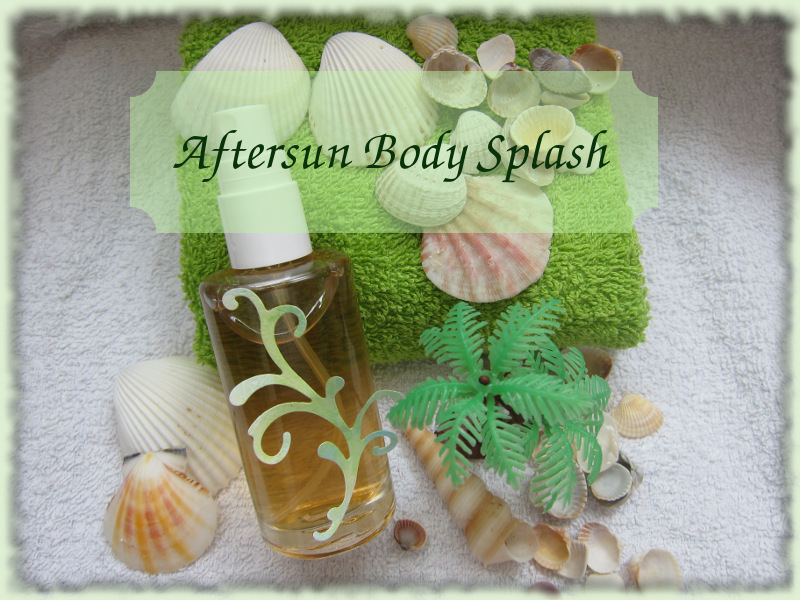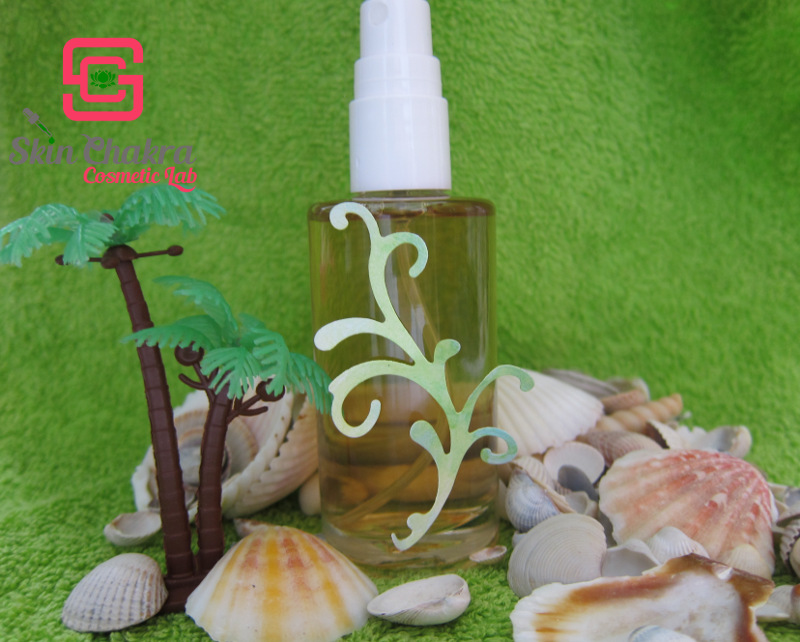
Sonntag, 16. Juli 2017
Aftersun Body Splash with Aloe and caffeine

There are 1001 reasons why you should keep your hands off DIY and home made sun care products. They simply do more harm than good but if you want to pamper yourself or offer something seasonal to your customers, you can create a variety of after-sun products that are not less important than sun care products to balance the skin, pamper it and rehydrate it after it has been exposed to sun.
Usually, suncare products (specially those made with physical UV-filters) have a higher pH than the usual skincare products and the importance of bringing the skin pH back to its physiological pH and rehydrating the skin that was exposed to sun (and probably wind and salt water) is as important as protecting the skin from UV exposure.
One of the easiest to make and use and yet most popular after sun products is a hydrating body splash. This certain formulation uses organic aloe juice powder that is quite magnificent in its hydrating and soothing properties. In addition, we're using caffeine powder (derived from green tea) that is proved to reduce the sensitization and cancer risk on sun-exposed skin.
You can prepare this body splash without any essentail oils. In that case you can choose a nice blend of hydrosols and a water soluble preservative (such as versatil BL or Dermosoft 1388 eco) and prepare the formulation without the hassle of a solubilizer. In this formulation however, I have used a blend of essential oils and hence have used a natural solubilizer (we don't recommend using Polysorbate-20 which is a PEG-derivative in natural formulations).
Just keep in mind:
When working with natural solubilizer, you need to find the minimum required ratio of the solubilizer for each specific essential oil or essential oil blend by trial and horror.
Let's go to the formulation and procedure:
Formulation:
| Phase A | |
| Organic neroli hydrosol | to 100,0% |
| Organic Roman chamomile hydrosol | 25,0% |
| Panthenol | 0,5% |
| Vegeluron | 5,0% |
| Caffeine powder | 0,5% |
| Sodium lactate | 2,0% |
| Sodium PCA | 1,0% |
| Dermofeel PA-3 | 0,1% |
| Hydroglyceric extract of yarrow -elderberry | 2,0% |
| Hydroglyceric extract of dandelion-comfrey | 2,0% |
| Ronacare Renoumer | 1,0% |
| Allantoin | 0,1% |
| Organic aloe juice powder | 1,0% |
| Phase B | |
| Symbiosolv clear | 3,0% |
| Plant based pentylene glycol | 2,0% |
| Organic litsea cubeba oil | 0,3% |
| Organic petitgrain oil | 0,1% |
| Organic peppermint oil | 0,1% |
| Phase C | |
| Versatil BL | 1,0% |
Procedure:
1- Blend phase A and B separately in two beakers at room temperature. If you have a magnetic stirrer (or two) this is the time to use it. Weight all of the ingredients in the beaker, put the magnet in it and let it stir for a while till everything is blended.
2- Slowly add phase B to phase A and stir.
3- Measure the pH. Prepare a 10% dilution of the sample in distilled water and measure the pH with your pH electrode or pH indicator strips. It should be between 4,5-6. Add the preservative. I'm using preserved hydrosols and extracts and this is the concentration of the preservative that works in this formulation. If you are using another preservative or unpreserved glycerites, hydrosols or extracts you need to test the efficacy of your preservative and find its optimum concentration.
4- Add the preservative and measure the pH again. This preservative slightly increases the pH. The final pH should be between 4,5-5,5. In our case it was 5,16. If the pH is higher than 5,5 reduce it by adding lactic acid or citric acid. If it is lower than 4,5 (which probably is not) increase it by adding sodium bicarbonate, sodium hydroxide or L-arginine.
5- Take your stability testing samples and fill the rest in a spray bottle.

Keep in mind that solubilizers are surfactants and foam. In order to avoid excessive foam you need to exactly find out the minimum solubilizer concentration necessary to solubilize your blend of essential oils. You don't want to overdose the solubilizer.
If you're inspired by this tutorial feel free to send us your photos and comment either per mail or to our Facebook page. If you post any photos on Instagram, don't forget to tag @SkinChakra.

